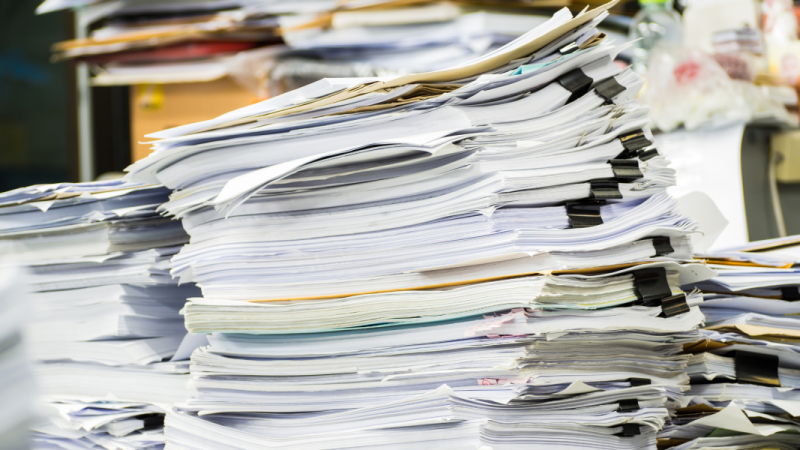Building a paperless office: is there a future for classic document management?

Categories :
Companies can reap various rewards by embracing a digital and paperless future. These benefits include heightened efficiency, enhanced security, and the opportunity to eliminate outdated filing cabinets.
According to Gartner, in 2014 alone, the cost to US businesses for paper filing, storage, and retrieval ranged from $25 billion to $35 billion. These staggering figures merely scratch the surface of the complexity and challenges associated with traditional paper-based processes.
Digital documentation facilitates seamless sharing, collaboration, and interaction among employees and partners, irrespective of their location. Probably, the time has come for paperless office trends and they will only strengthen in the foreseeable future. It is profitable, convenient and safe.
Is the Future of Document Management Related to Paper Documents?
Unfortunately, the listed tasks are almost impossible to achieve using standard methods. However, we must recognize the need to balance digital and physical documents since some of them still need to be paper. Hybrid document management systems are gaining popularity with a gradual transition to a paperless format. One of the key tools in this category is faxing from an iPhone. By the way, you could try this out right now and experience the benefits of faxing directly on your phone instead of a traditional fax machine. To a large extent, digital fax has played a role in shaping the trend toward a paperless office.
Practical Steps to Create a Paperless Office
#1 Invest in the Right Software
Choosing the right software for paperless office workflows is crucial for a successful transition. The goal is to ensure that your digital documents actively contribute to streamlined workflows, rather than simply being stored. For example, the apps you select for secure document creation, sharing, and editing should allow you to interact with PDF documents. Look for PDF tools that encompass features such as document scanning, conversion, and creation, PDF text editing, form filling, document manipulation, and security. One of the modern and necessary solutions is document scanning and OCR solutions services.
#2 Simplify the Transition to Paperless
Completing your paperless strategy should bring about saved time and resources, as well as a reduced impact on the environment. However, the transition may not always go smoothly. Simplifying the shift to a paperless office requires taking certain steps. Detailed instructions should be sent to employees to prepare them for what to expect. Employees should be informed that the new system will make their jobs easier by granting them instant access to documents. If necessary, training should be provided.
To ensure a smooth transition, consider implementing the paperless solutions gradually in each department, as the needs of a warehouse differ from those of an accounts department. This staged approach will allow you to address emerging issues promptly, rather than all at once.
#3 Move/Remove Printers and Copiers
If your team still has easy access to printers, they will continue using them. However, you can limit their use by removing printers from desktops and replacing them with centralized network printers located in specific areas within the office.
To ensure printing security when needed, enable logging and require password access. This allows management to track usage and address any misuse. Implementing policies that restrict purchasing ink and toner to approved devices can further reduce the use of printers on employees' desks.
#4 Embrace Cloud-Based Content Collaboration
Collaboration reigns supreme. Therefore, in addition to desktop tools, explore cloud-based collaboration solutions that facilitate real-time document sharing, editing, and feedback.
When it comes to collaborating on documents, seek out online PDF annotation tools, text editing tools, and document viewers. Also, ensure that these tools offer universal online compatibility, mobile device support, and a desktop version. Cloud-based collaboration is only impactful if it is easily accessible.
If your team collaborates remotely with other parties, then cloud-based tools are essential. Strive to streamline and minimize the reliance on physical documents for all parties involved.








